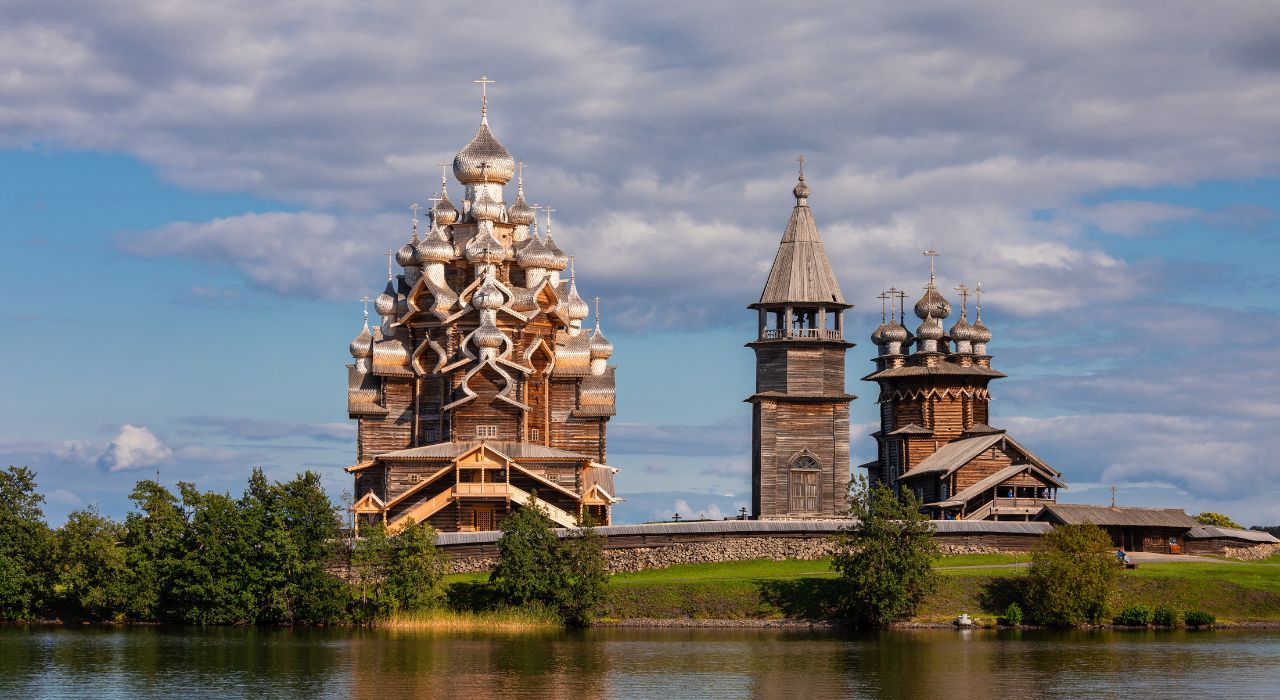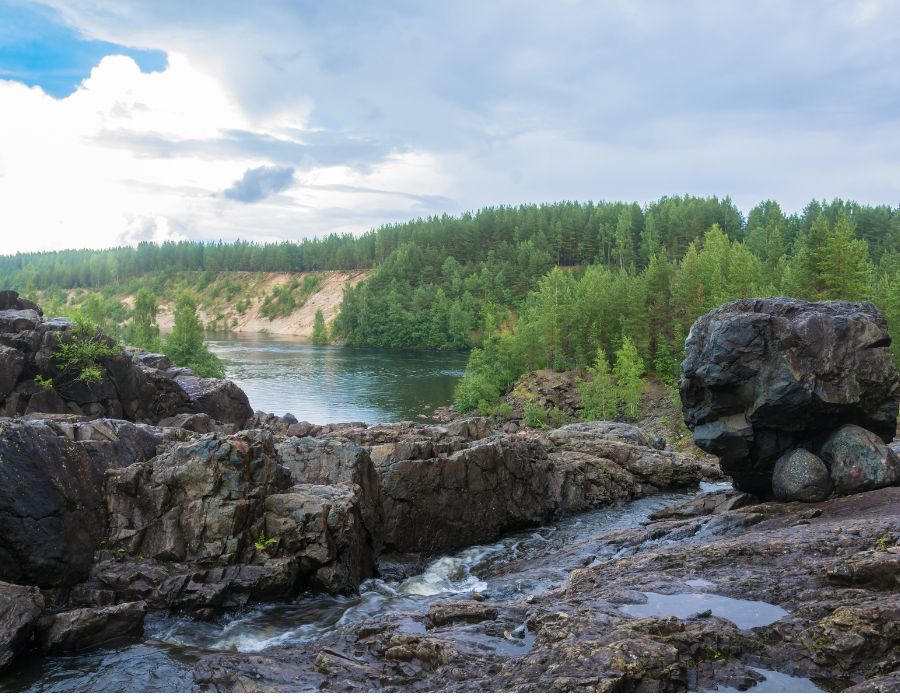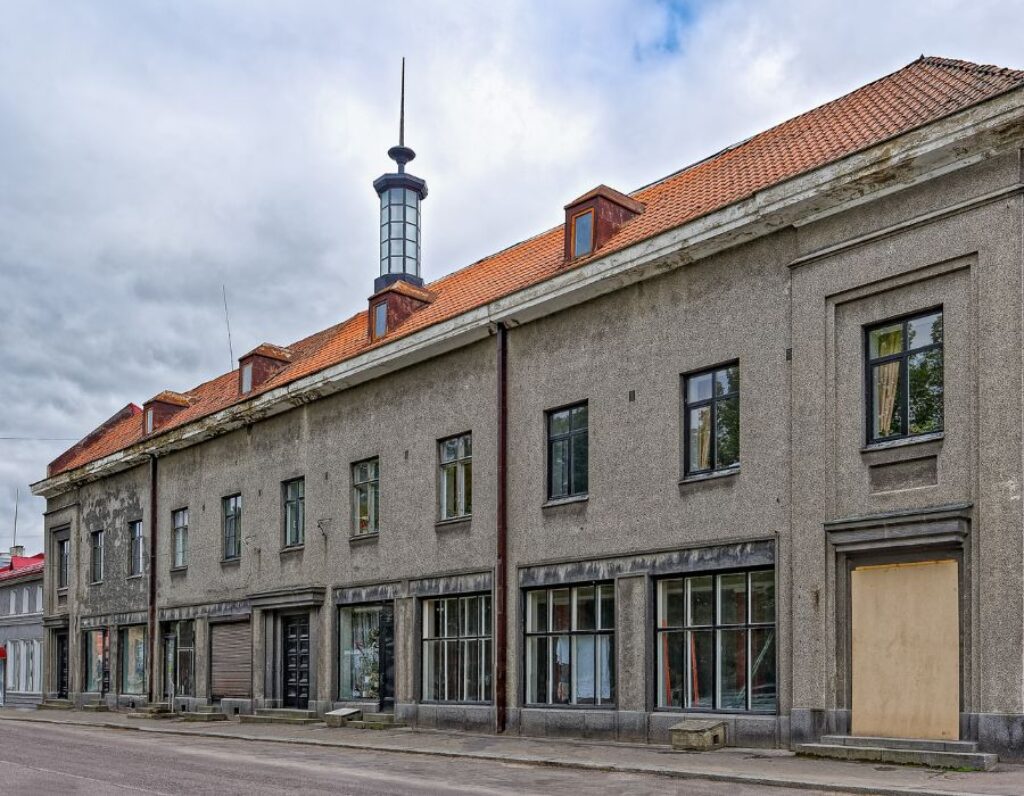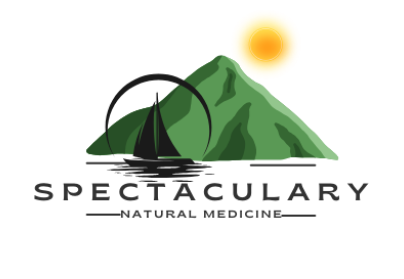
We introduce you to the oldest volcano on the planet, a paradise for gourmets, the healing waters of the North, architectural wonders and other interesting places in the beautiful Karelian region.
Girvas is the oldest volcano on the planet

For a long time, it was not known that it was in the northern lands of our country, in Karelia, where the world’s oldest volcanic crater of a long-inactive volcano is located. The crater was hidden from people by the waters of the stormy northern Suna River. It was found during the construction of a hydroelectric power station; the discoverer of the crater was geologist Anatoly Svetov. The party of geologists does not consider the discovery accidental and surprising because many millennia ago, in these places, there was a peak of volcanic earth activity. Constant earthquakes, faults and shifts of the earth’s crust led to the formation of mountains and plateaus and were common for a long time. After the onset of the glacier, the relief smoothed out, and Girvas almost disappeared.
Kurkijeki – the kingdom of lichens
The village of Kurkieki in the Lakhdenpoh region has been known since the end of the 14th century, and at the end of the 19th century, the Finnish scientist Veli Räsinen found more than 350 species of lichens in the vicinity of the village and made a detailed scientific description of each species. Lichens appeared on our planet long before plants and represent a transitional form from fungi to the simplest plants – algae. The ancient Karelians who lived in these territories not only consumed lichens for food but also used them for farming: some species were used to make dyes for fabrics, and others were used to weave fishing nets. Today, Kurkijeki is a centre of tourism for gourmets; now broths, jelly, and decoctions are prepared from lichens, which have healing properties that are not inferior to modern antibiotics.
Ruskeal – marble quarry
In the Sortavala region, there is one of the most beautiful places in Karelia – the Ruskeala marble quarry. The quarry began to be developed under Empress Catherine II. The marble mined here was sent for the construction of the most outstanding structures of Russian architecture in St. Petersburg and Moscow, such as the Marble Palace, Mikhailovsky Castle, Kazan Cathedral and many other masterpieces of urban architecture. High-quality Karelian marble was used for the construction and decoration of the Primorskaya and Ladozhskaya metro stations of the St. Petersburg metro.
Sortavala – the heritage of the Finns and Swedes

Today, Sortavala is one of the few cities in which northern architecture has been preserved in its original, almost untouched form. This unique city was given to us as a trophy from Finland during one of the wars. What is most striking in Sortavala are the buildings in the Art Nouveau and Electrical styles, built in the 19th century by Finnish and Swedish architects. The town even now has more similarities with the towns of Scandinavia than with the Russian cities of the North. The most prominent structure is the Leander House, built in the early 19th century by the architect Eliel Saarinen for his banker brother. Currently, this almost fairy-tale castle with elements of the Gothic style houses a branch of the FSB.
Marcial Waters Resort
The famous “martial” waters were discovered by accident by worker Ivan Ryaboev, who was mining ore. Having found the source, the worker, in accordance with the order of Peter the Great, who ordered to look for mineral springs, reported the discovery to high authorities. For his find, Ryaboev was rewarded with a certificate of freedom and a monetary reward. The imperial physician examined the open waters and was surprised by their healing qualities; he described in detail the beneficial effects of mineral waters on the human body. Peter the Great personally visited the “martial” waters several times in the hope of restoring his health. After the death of the emperor, the resort fell into decay. It was restored in the mid-20th century, and a resort was reopened here called “Marcial Waters”.
Kalevala – the village of rune singers Since the 17th century, residents were known throughout the northern lands as Rune singers. They sang runic ritual songs under relict pine trees. The famous folklorist who studies the peoples of the North, Elias Lönnrot, based on these songs and rituals, created the world-famous epic “Kalevala”. Nowadays, the village, previously called Ukhta, bears this name. In the village, there is the Kalevala Museum of Rune Singers, where you can get acquainted with the household items of rune singers and listen to their singing performed by residents. Part of the relict pine has survived to this day and bears the name of the Finnish folklorist Lönnrot. Kizhi – beautiful structures made of wood On the island of Kizhi in Lake Onega, there is the largest open-air museum in our country.
This huge historical and cultural complex is made of wood without the use of other building materials. The most famous building is the Church of the Transfiguration, built in the 17th century. No less popular are other buildings of the Kizhi ensemble – the Church of the Intercession of the Virgin Mary and the Tent Bell Tower. There is a legend that the carpenter Nestor, who built the 22-domed Church of the Transfiguration of the Lord without using nails, after finishing the construction, threw his axe into the water so that no one would ever build a more beautiful structure. Currently, the complex also includes wooden outbuildings from those times.
Vaalam Monastery – the main shrine of Russian Orthodox Christians

The main attraction of Valaam is the Valaam Monastery. Tens of thousands of pilgrims and tourists come here every year. The monastery was founded by monks in the 9th century. During its existence, the monastery was closed many times and began to operate again, and the land on which it was located passed to the Swedes several times. The Valaam Monastery is located in a picturesque place, surrounded by unique nature. Politicians, movie and pop stars, and foreign guests visit the monastery. Sheltozero Museum – the memory of the ancient Vepsians In the village of Sheltozero, there is a museum in which the cultural heritage of the Vepsians has been preserved. Veps are a Finno-Ugric people with an ancient and distinctive history. The house in which the museum is located was built by the merchant Melkin in the 19th century and is an architectural monument. The museum has more than 7 thousand household items that tell about the spiritual and everyday life of the Vepsians.
Petrozavodsk – the pearl of Karelia
Petrozavodsk – today’s capital of Karelia, one of the ancient Russian cities, was founded by decree of Peter the Great. The city dates back to the founding of an arms factory in the 17th century on the territory of modern Petrozavodsk, around which the city grew over time. In the 19th century, houses made of stone and many churches and temples were built in the city. Modern Petrozavodsk is a large city located along the coast of Lake Onega. The city has many interesting historical places, architectural monuments, monuments and sculptural compositions.
The most popular among the people is “Fishermen with a Net”. People humorously come up with new names for compositions, for example, “two terminators” or “victim of perestroika.” One of the most interesting museums in Petrozavodsk is the National Museum of the Republic of Karelia, which was founded in the mid-19th century by Governor Grigoriev. Modern Petrozavodsk is a cultural city; many festivals and holidays take place there every year. The brightest of them are the “White Nights Festival” and “Hyperborea”.







